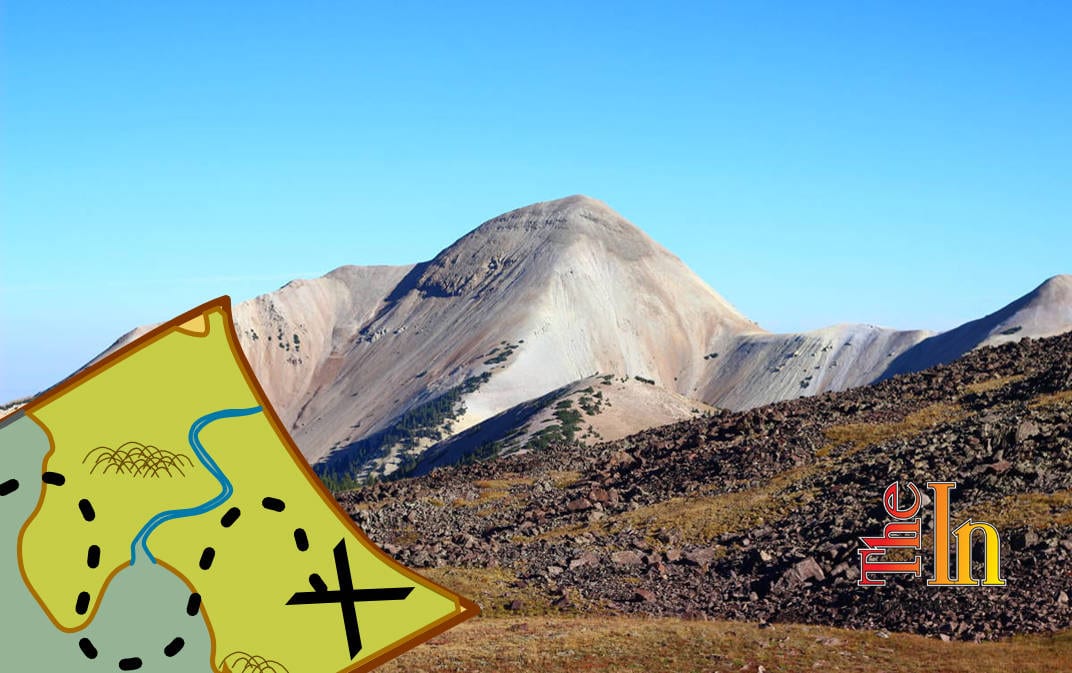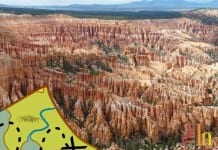Hiking Southern Utah: Mt. Belknap
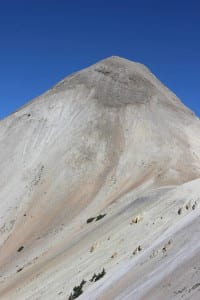
Trail Name: Mt. Belknap (unofficial trail)
Location: Tushar Mountain Range near Beaver
Difficulty: Very strenuous
Length: 2.5 miles roundtrip
Elevation Gain: 1400 feet
Average Time: 3 to 4 hours roundtrip
Family-Friendly: Not suited for young children but makes a wonderful hike for older kids
Dog-Friendly: Yes
The Tushar Mountain range, just east of the town of Beaver, is the third-highest mountain range in the state of Utah, with 3 peaks topping 12,000 feet (and one that is just one foot shy of the 12,000 mark). Mt. Belknap, the second-highest of the Tushar peaks, makes for a relatively easy ascent of a mountain of this size. An added bonus is that the road that leads to its base is the highest road in the state. There is also the possibility of seeing both elk and mountain goats.
Access: From St. George, drive north on Interstate 15, approximately 100 miles to exit 109. Follow Utah State Route 160 2.1 miles to the small town of Beaver. Head east on Utah State Route 153 for a little over 16 miles. Turn left onto Big John Flats Road. Drive for just under ten miles until a hairpin turn is reached. There is parking for several cars.
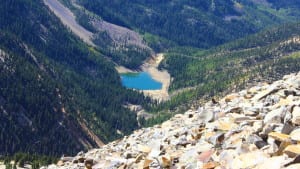
From the switchback on the road, head west to pick up the old mining road (just a faint track). The mining road leads northeast initially, but then it switchbacks to the southwest, contouring around the slopes of a tall knoll (often mistaken for Mt. Belknap) to reach a broad saddle. Pick up a faint trail heading northwest, passing under the west side of the knoll. Soon a second saddle is reached, and Belknap Peak towers above. Walk to the base of the southeast face, and follow the trail through several hundred feet of aggravating scree. Eventually, the scree gives way to a talus slope, and the trail becomes more defined. Follow the zigzagging path as it works 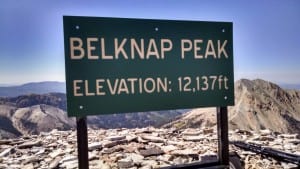 up the face, eventually contouring around the south face of the mountain to the west side. As the trail reaches the summit dome, a short jaunt back to the east leads to the summit. There is a sign, a waterproof register, and the remains of a cast-iron stove on the summit. There are also several old stone ruins, the remains of old surveyor’s huts.
up the face, eventually contouring around the south face of the mountain to the west side. As the trail reaches the summit dome, a short jaunt back to the east leads to the summit. There is a sign, a waterproof register, and the remains of a cast-iron stove on the summit. There are also several old stone ruins, the remains of old surveyor’s huts.
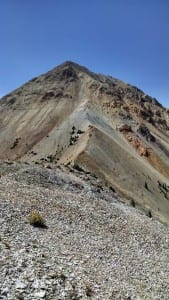
Special considerations: Although the trail is not long, and the elevation gain not extreme, the fact that the mountain is 12,000 feet high means that the threat of altitude sickness is a very real possibility. If any of the signs of AMS (Acute Mountain Sickness) begin to occur — headache, nausea, dizziness, shortness of breath, or fatigue — descend immediately. AMS can become serious very quickly and can be deadly if not dealt with.
Extra credit: For an extremely strenuous day, drop down the west face of Mt. Belknap and follow the west ridge for over a mile to the base of Baldy Peak, another 12,000-foot peak. Climb up the east face (on extremely loose scree and talus) to the summit. To return, climb back over the summit of Belknap (making for three 12,000-foot peaks in a day!) and return to the parking area. Collapse. Adding this wrinkle to the hike pushes the total elevation gain for the day to just under 5,000 feet in a roundtrip of approximately seven miles.
Articles related to “Hiking Southern Utah: Mt. Belknap”
Viewpoints and perspectives expressed throughout The Independent are those of the individual contributors. They do not necessarily reflect those held by the staff of The Independent or our advertising sponsors. Your comments, rebuttals, and contributions are welcome in accordance with our Terms of Service. Please be respectful and abide by our Community Rules. If you have privacy concerns you can view our Privacy Policy here. Thank you!
Click here to submit an article, guest opinion piece, or a Letter to the Editor


